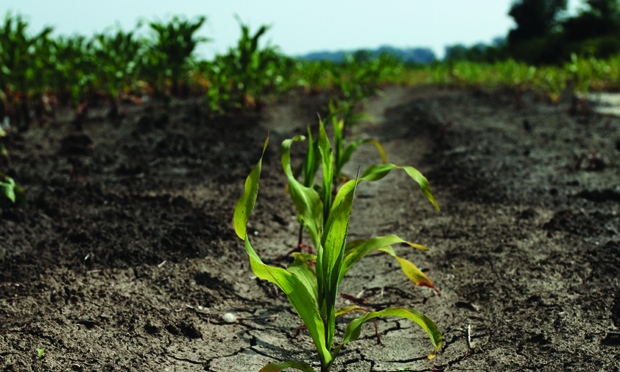
“If you can’t stand the heat, get out of the kitchen,” the saying goes, but that’s a little tougher when it comes to the Earth’s atmosphere. While the vast majority of climate scientists agree that global warming is occurring and that human activity is responsible, a significant percentage of Americans resist the idea. Research indicates that partisan politics are in part to blame, despite a clear increase in extreme weather events such as wildfires, droughts and floods.
Part of the problem for public at large is that “weather” and “climate” aren’t easily disentangled — heat waves, dry spells and storms come and go, masking larger patterns. To better convey the rising probability of unusual weather, a 2012 study published in the Proceedings of the National Academy of Sciences, “Perception of Climate Change,” used the concept of “climate dice.” The researchers, based at the Goddard Institute for Space Studies and Columbia University, looked at the global distribution of seasonal temperature anomalies and how they have shifted over time.
The scientists choose 1951-1980 as the study’s base period for three reasons: “First, it was a time of relatively stable global temperature, prior to rapid global warming in recent decades. Second, it is recent enough for older people, especially the ‘baby boom’ generation, to remember. Third, global temperature in 1951-1980 was within the Holocene range, and thus it is a climate that the natural world and civilization are adapted to.”
The key findings include:
- Unusual seasonal mean temperatures have shifted significantly over the past 30 years. “The climate dice are now loaded to a degree that a perceptive person old enough to remember the climate of 1951-1980 should recognize the existence of climate change, especially in summer.”
- “Summers with mean temperature in the category defined as cold in 1951-1980 … which occurred about one-third of the time in 1951-1980, now occur about 10% of the time, while those in the hot category have increased from about 33% to about 75%.”
- Climate change has brought about a new category of extremely hot summers, with average temperatures at least three standard deviations greater than normal. While such summers occurred previously, they were both rare and limited in range, covering far less than 1% of the global land area. In recent years, however, they are occurring in more than 10% of the planet.
- While some meteorologists have attributed recent extreme heatwaves such as those in Moscow, Texas and Oklahoma to local weather effects, the study indicates climate change was responsible. “We can say with a high degree of confidence that events such as the extreme summer heat in the Moscow region in 2010 and Texas in 2011 were a consequence of global warming.”
- Because of climate change, the “climate dice” are now loaded. Whereas during the base period the odds of average temperatures being warmer than normal, average and cooler than normal were equal (33% chance for any outcome), now more than four out of the six sides favor a hotter-than-average outcome (67% or greater probability).
- Rainfall data reveal significant increases of heavy precipitation over much of Northern Hemisphere land and in the tropics and attribution studies link this intensification of rainfall and floods to human-made global warming.
“Although climate fluctuations are normal, the rapid global warming in the past three decades, from an already warm level, is highly unusual,” the researchers state, noting that “such changes should be more perceptible to the public during the next decade as the distribution of temperature anomalies continues to shift toward higher values.” They suggest that the best approach to reining in climate change is to encourage a shift to clean energy by putting a rising price on carbon through programs such as cap and trade.
Keywords: greenhouse gases, carbon, global warming
